A Circuit from Old Tebay
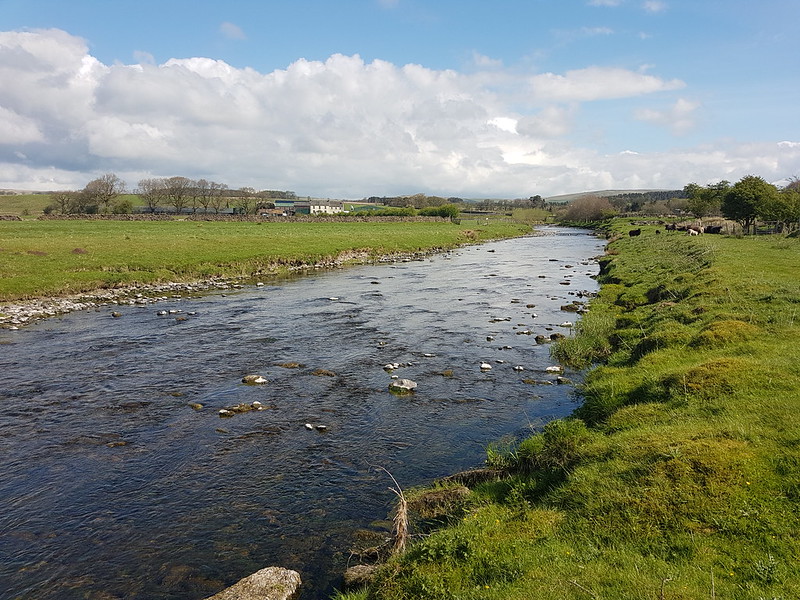
In my own haphazard, arbitrary fashion, I’ve been seeking out the tributaries, and catchment hills of the River Lune since an exchange in the comments section of this blog back in 2017.
“That’s a pretty full set of experiences for an evening walk. Flowers, birds, deer, caves, gorges, rivers.”
“I may continue this theme of exploring tributaries of the Lune – a walk which starts low in the Lune valley and then climbs up into the hills gives a tremendous variety of scenery, flora, fauna etc.”
“I think your suggested tributary project is a good idea.”
Isn’t it amazing how far a little encouragement can take you!
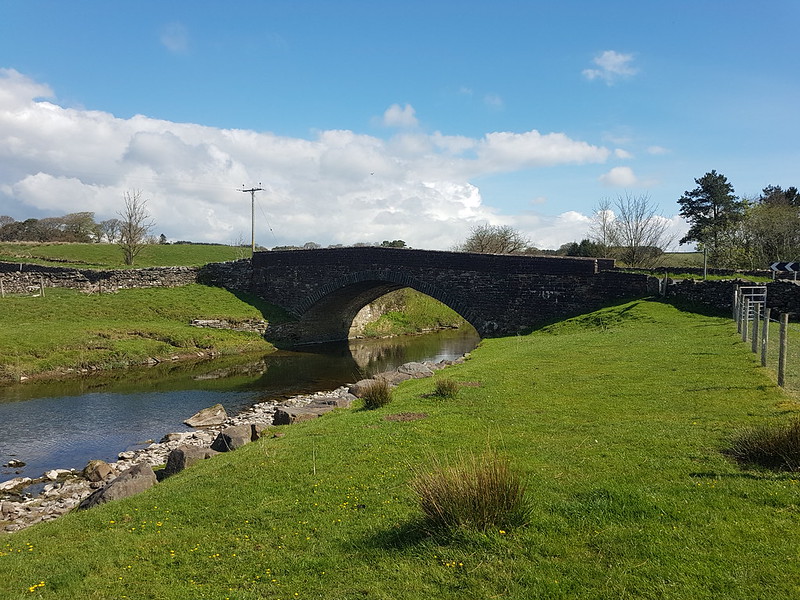
Having rather neglected the Lune, and it’s legion of sources, in my rush to tick-off Wainwrights by the dozen last year, I’ve been itching to get back to a little exploration. With a dodgy forecast which suggested that the higher hills, and the western Lakes in particular, would be best avoided, I drove up to Tebay in first drizzle and eventually heavy rain and dense cloud. Only as I emerged from Tebay gorge did the cloud suddenly clear, revealing huge swathes of unexpected blue sky.

This is a route I’ve been wanting to walk for a while, because it crosses almost entirely virgin territory for me, but it’s a good job I didn’t leave it for an evening walk, as I have most of my previous Lune Catchment walks, since it turned out to be a fairly long wander. When I plan routes I have a tendency to be fairly ambitious regarding how much I can pack in, and also to not bother checking the length of the route before I embark.
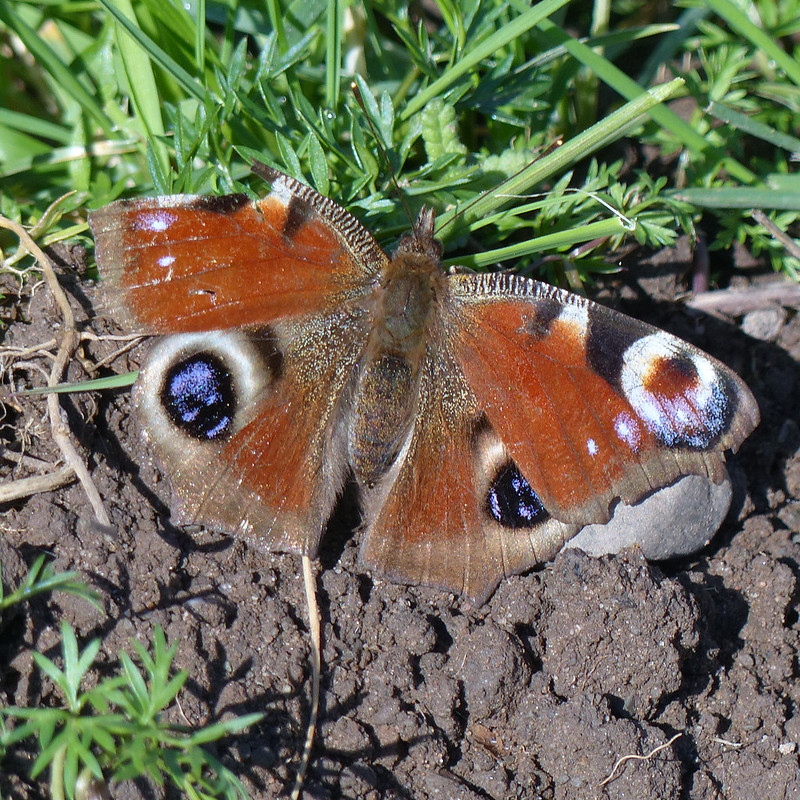
I saw quite a lot of butterflies during the early part of the walk, particularly Peacocks.

I’ve always liked walks which follow rivers or streams and this route along Birk Beck was no exception.
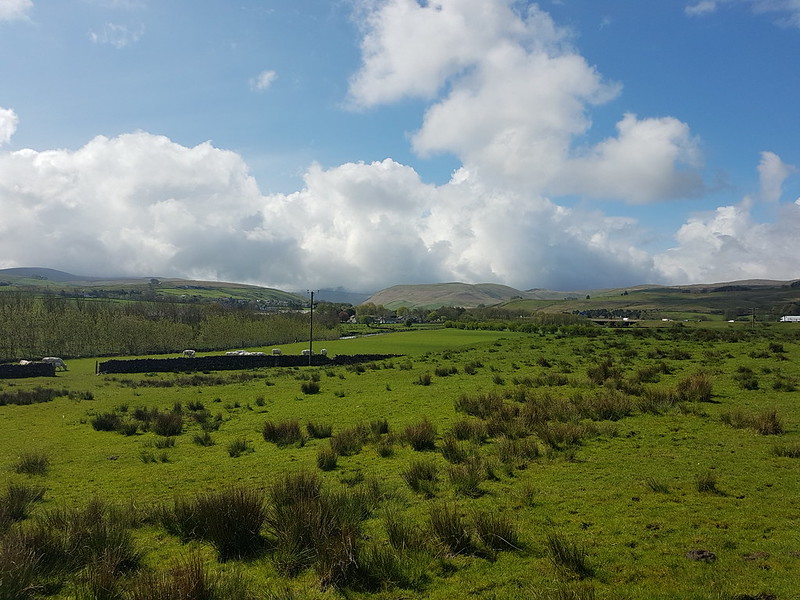
Although I was enjoying glorious sunshine, the nearby Howgills remained draped in cloud for most of the morning.
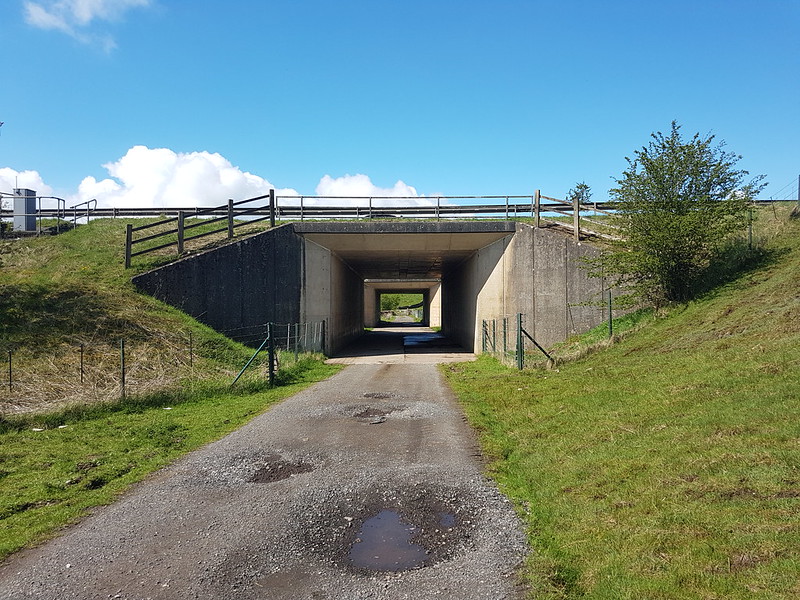
This was a walk with a wide assortment of bridges. I’m a sucker for a bridge, even modern concrete ones, so that was another bonus.
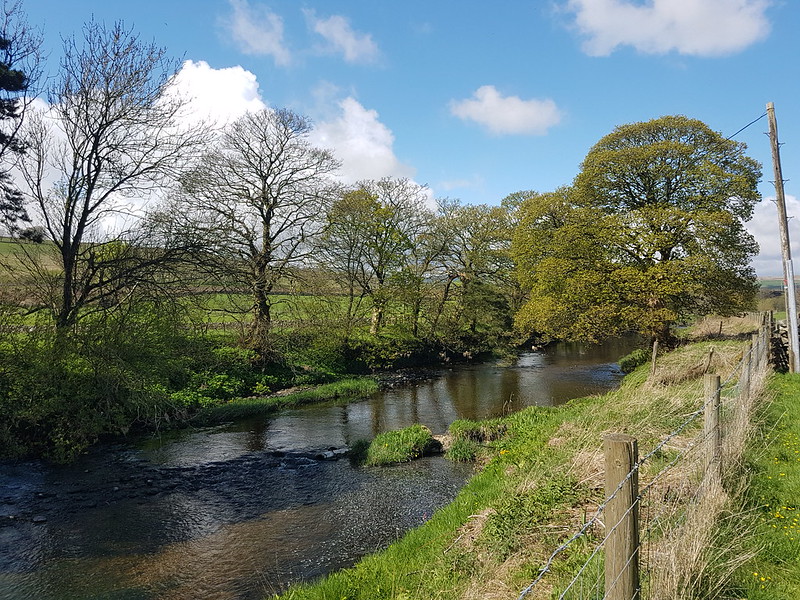
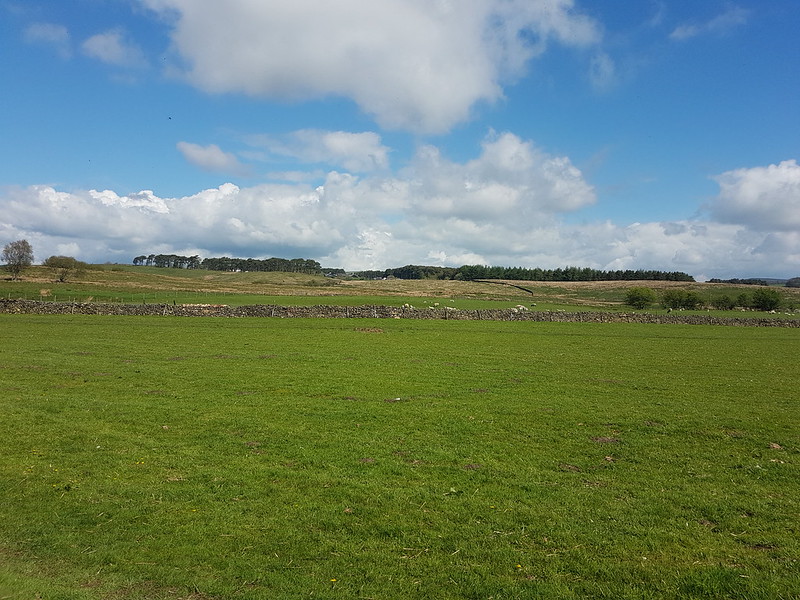
Back in the days when I first met the people who are still my most frequent companions in the hills, when we travelled up to Scotland every New Year and every Easter and occasionally at other times of the year too, we habitually stopped at Tebay West services. It was a bit of a ritual, never to be missed. So I was pleased to be able to send them this view of the services, admittedly rather hidden in the trees. Not one of them recognised them; they must be getting old!

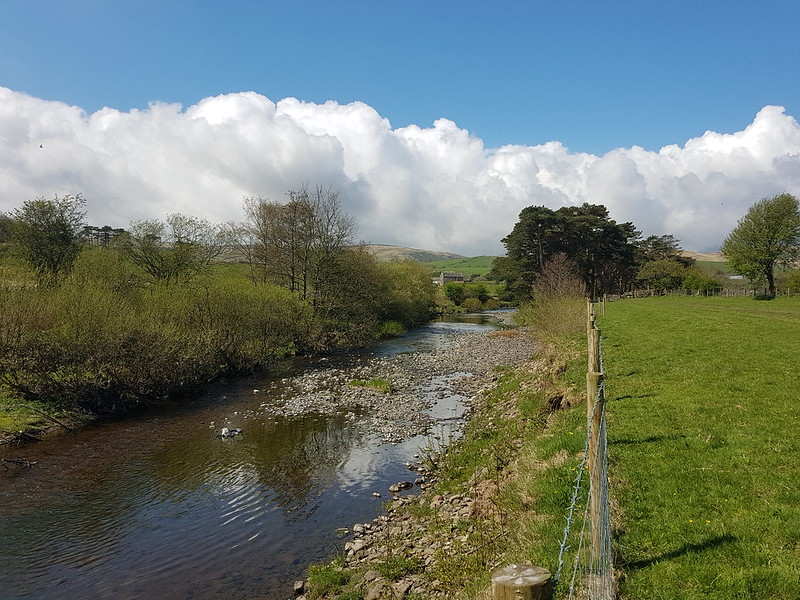
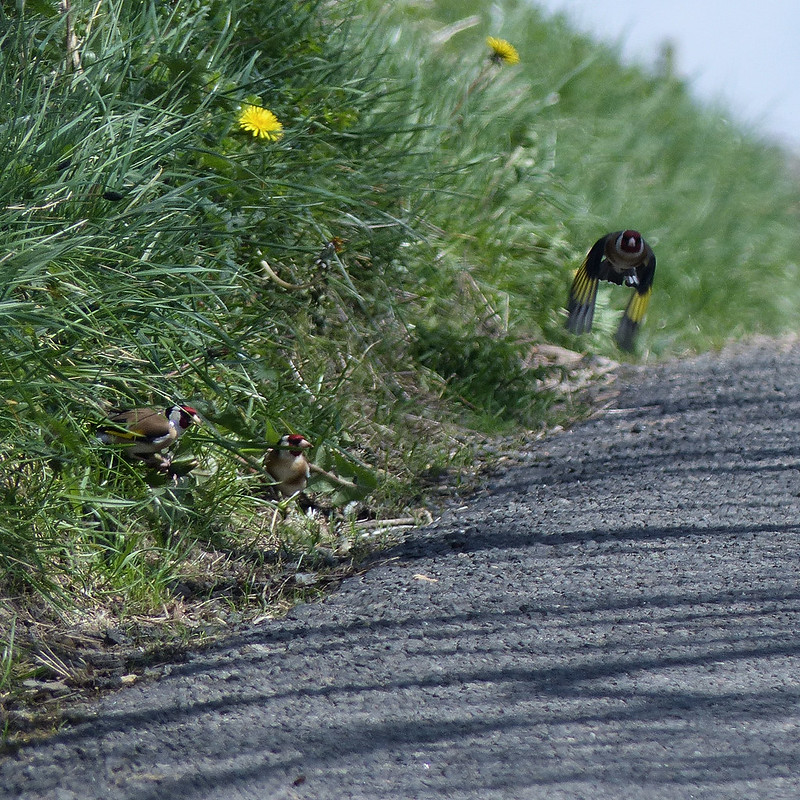
Climbing up the little minor road towards the services, from the hamlet of Greenholme, I passed a tree occupied by a charm of Goldfinches and managed to snatch a photo of a few which were pecking at Dandelion flowers on the verge.
All along the beck I could hear and occasionally glimpse small birds, tits and finches, but, with the trees now in leaf, it wasn’t generally possible to get photos.
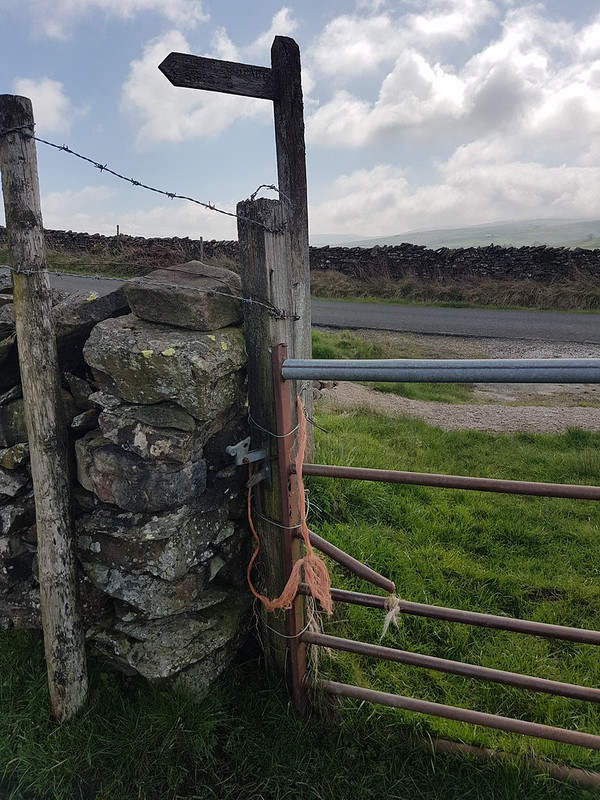
Leaving the road, on a path which would take me back down to Birk Beck, I encountered this gate which had been wired shut. It was the first of several such obstacles I came across and I really should have contacted the local footpaths officer. There was no other recourse but to clamber over the gate, which as you can see was a bit decrepit, but fortunately it didn’t collapse from under me.


I’m not sure why I didn’t take any photos whilst I was passing through Scout Green, I remember it as a charming spot.

From this point the path was crossing much rougher grassland, often quite wet. Now there were Curlews, Lapwings and Ravens to be seen and heard. The path climbed a little above the beck.
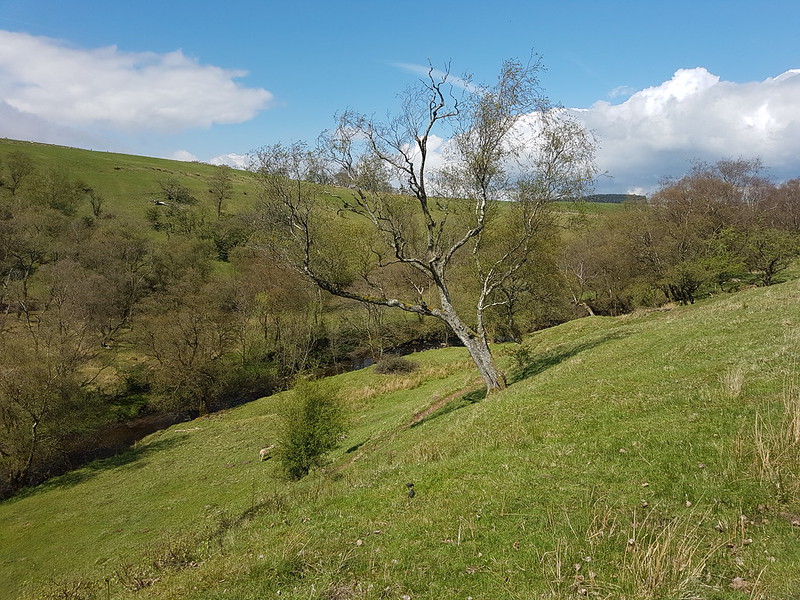
One of the things I had been particularly looking forward to was the waterfall Docker Force.
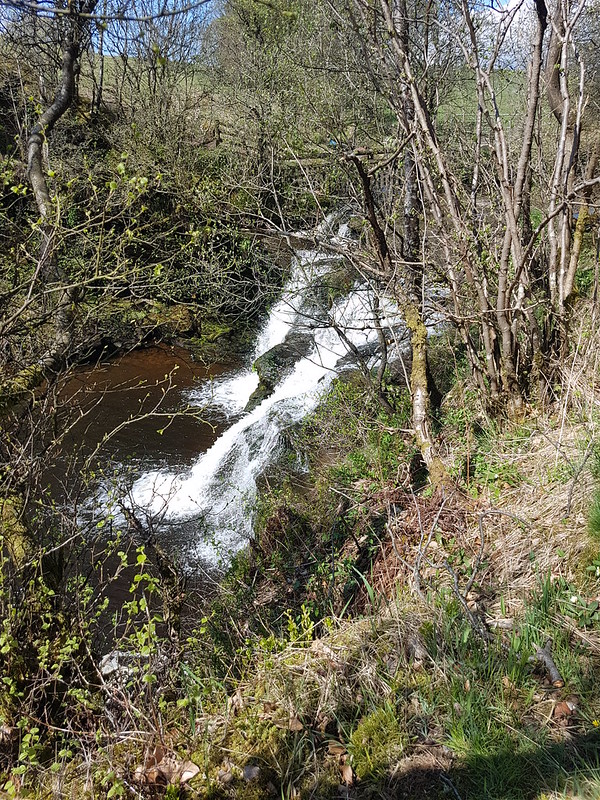
Since there’s a good photo of it on Geograph, I’d assumed that it would be easy to access. Not a bit of it. It’s well below the path and can be heard from there, but not seen. Once again, I clambered over a gate, but this time because I was trespassing, and then I made my way down through some extremely squelchy woodland. At the bottom, there’s a small cliff and I couldn’t see an obvious way down, so I made do with this sideways on view.
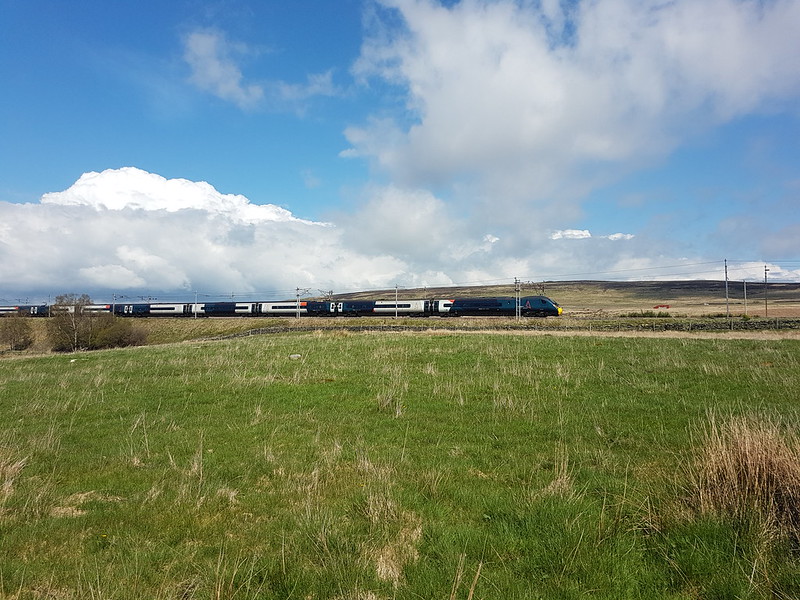
Once again, I feel the need to disclaim any impression I might be making of train-spotterish tendencies; it’s just that somehow I’m compelled to take a photo whenever a train passes. Do you think I might be in denial?
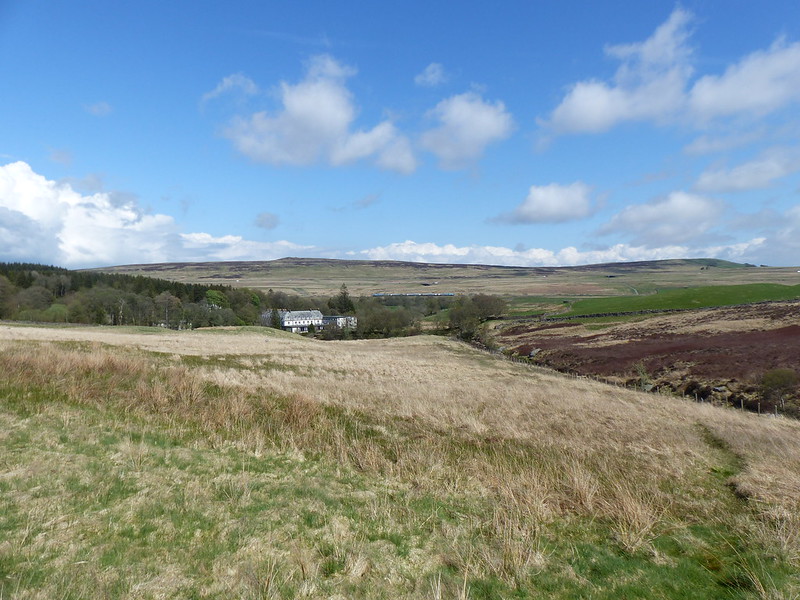
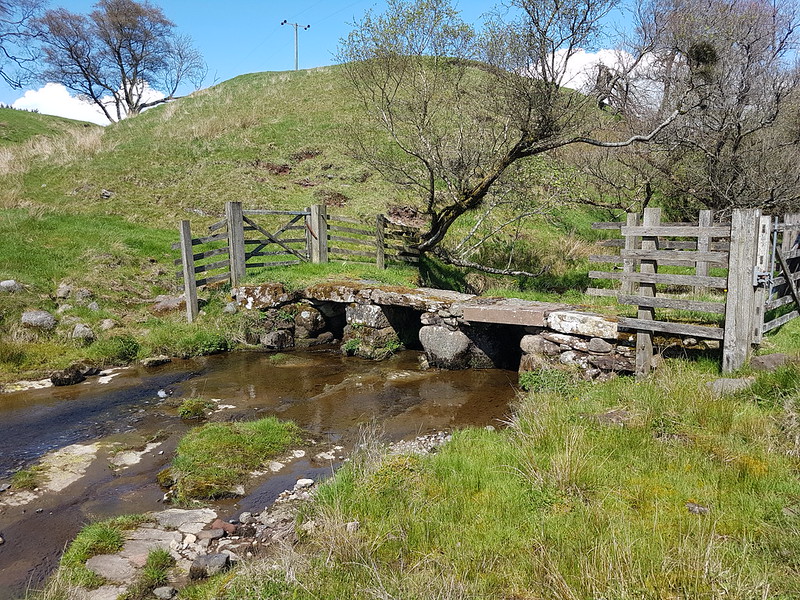

At the back of the Shap Wells Hotel, up a little rise, is this monument.

Which seemed quite appropriate since this was the day that ol’ Big Ears got crowned. Visiting this monument was as close as I came to joining in the celebrations.
It seems like a very out-of-the-way spot for a monument. Come to that, it’s a bit remote for an enormous hotel too.

Aside for a trio of bird-watchers in the grounds, the hotel seemed to be deserted. In fact, I hardly saw anyone all day – another advantage of these Lune tributary wanderings, there’s plenty of solitude on offer.
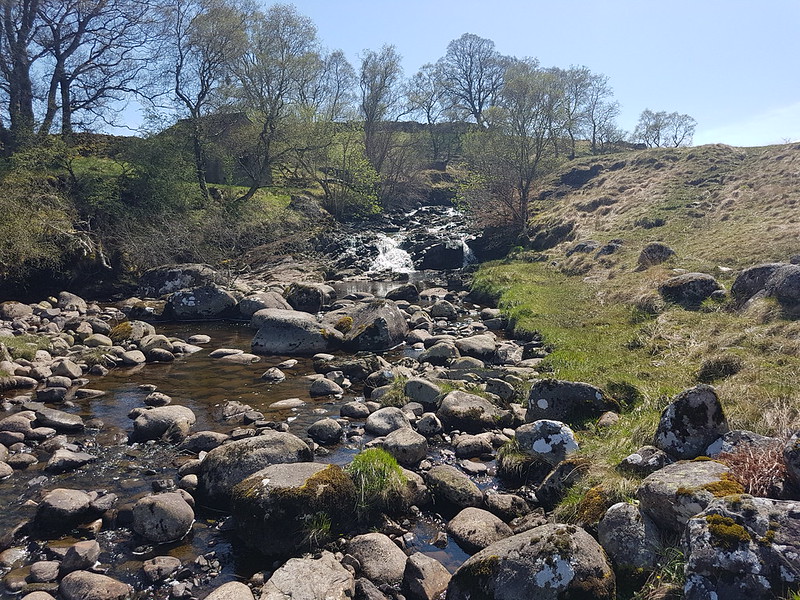
Having visited it’s more famous namesake in the Western Lakes so many times over the years, it was nice to finally get acquainted with the less well-known Wasdale.


I’ve seen quite a few Common Lizards this year on my walks, but they’ve almost always been too quick for me to catch in a picture. I would hazard a guess that this was the largest of all the ones I’ve encountered this year.
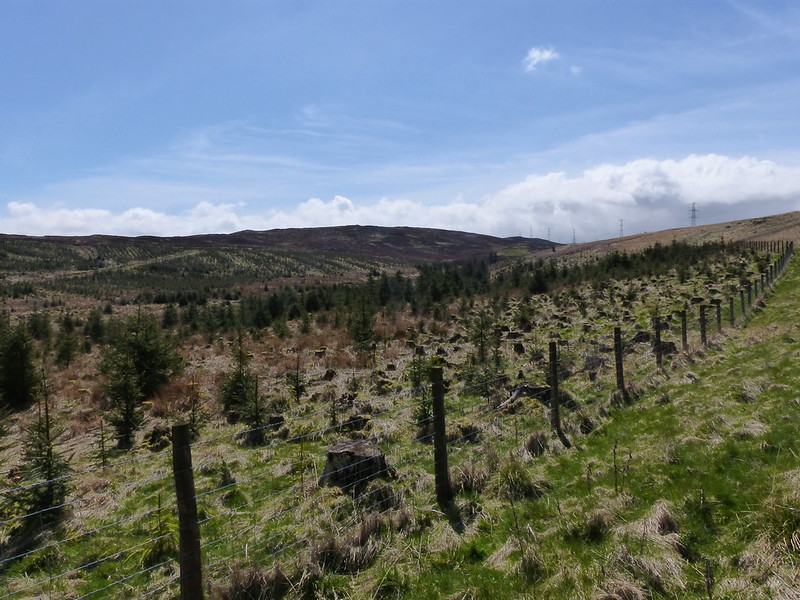
The path climbs a little above the beck, along the boundary of a conifer plantation which looks to have been clear-felled and replanted. There was a very cool breeze blowing and I’d been on the lookout for a sheltered spot in which to stop for a brew. I found a place, down by the fence, between a large tree-stump and a small grassy bank, which I thought might be as good as I would find. As I was fiddling with my stove, a large (i.e. female) Buzzard swept down along the course of the stream, flying unusually low for a Buzzard, so that I had a marvellous view from above. I have to confess, however, that I was relieved when she swerved away from me and across the slope opposite.
This spring and summer, we’ve had gulls nesting at work and they have been extremely protective of their nest: to venture into the car park has meant risking several swooping attacks. I don’t think anyone has actually been clawed at any point, but I think lots of us have had our hair ruffled a few times. I never managed to be as composed as one or two of my colleagues who strode confidently across the tarmac unflinching under the barrage, but, on the other hand, I didn’t take to cowering under a brolly either.
Past experience tells me that Buzzards are equally concerned parents; I’ve been ‘warned off’ a few times. When the female was joined by a tiercel, even though they initially settled on a distant dry-stone wall, I began to pack-up the stove and prepared to make myself scarce. In fact, they didn’t actually come too close, but I knew I wouldn’t have a restful cuppa whilst they were circling, so I moved on.
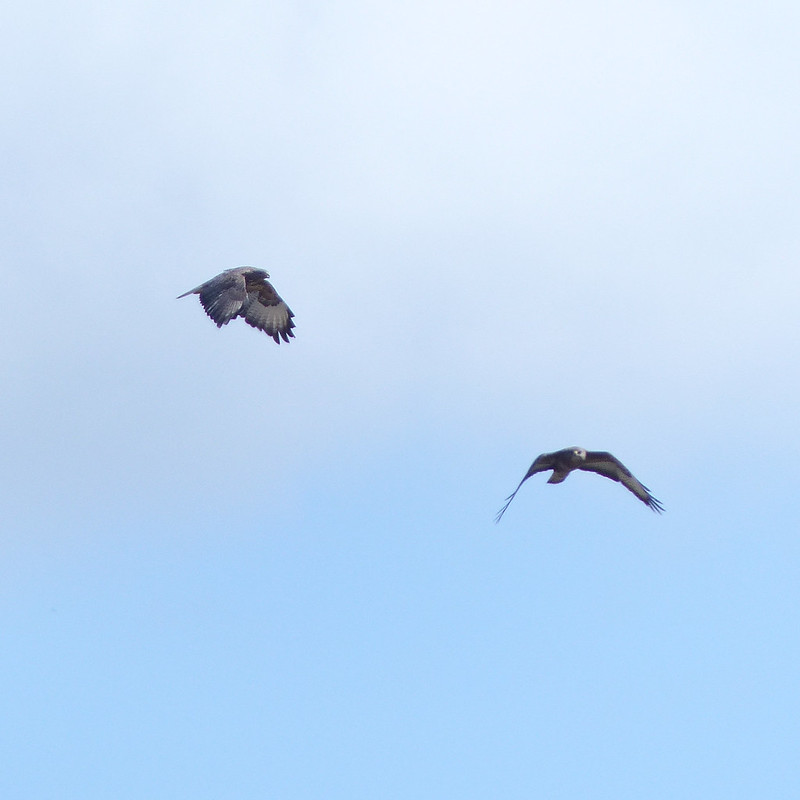
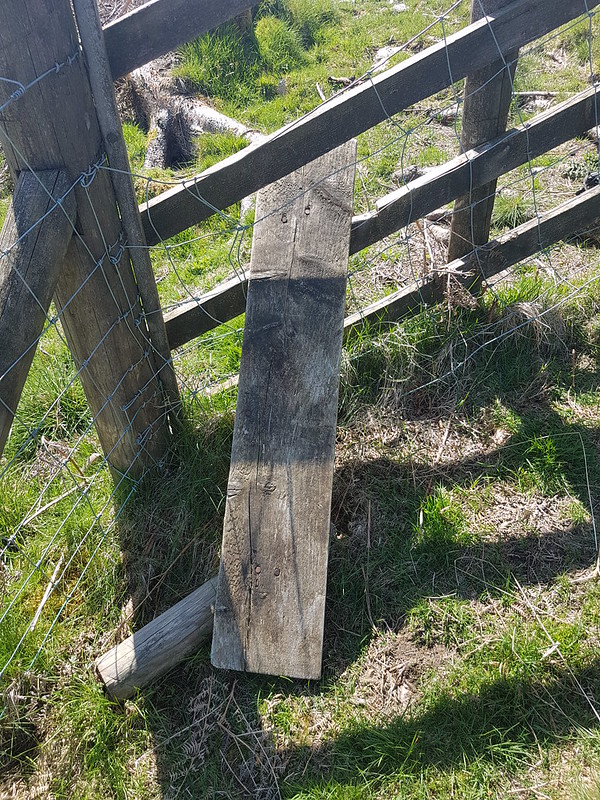
A little further-up I encountered more footpath obstructions, firstly a collapsed stile, which wasn’t too much of a problem, but then felled trees which made life very difficult. Much of the brashing had not been removed, leaving the track covered in heaps of broken branches and twigs, and clearly heavy machinery had been used so that the track was deeply rutted and pocked. It was really quite unpleasant.
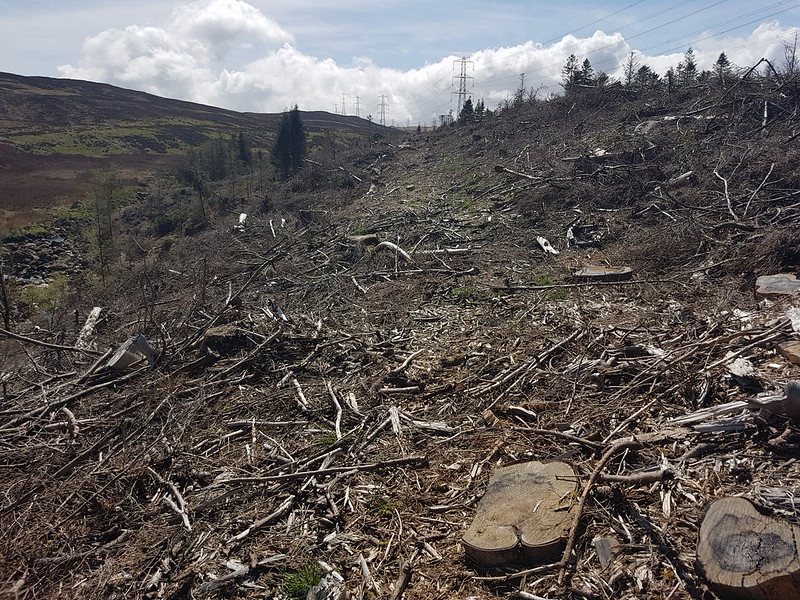
Fortunately, it didn’t last too long.

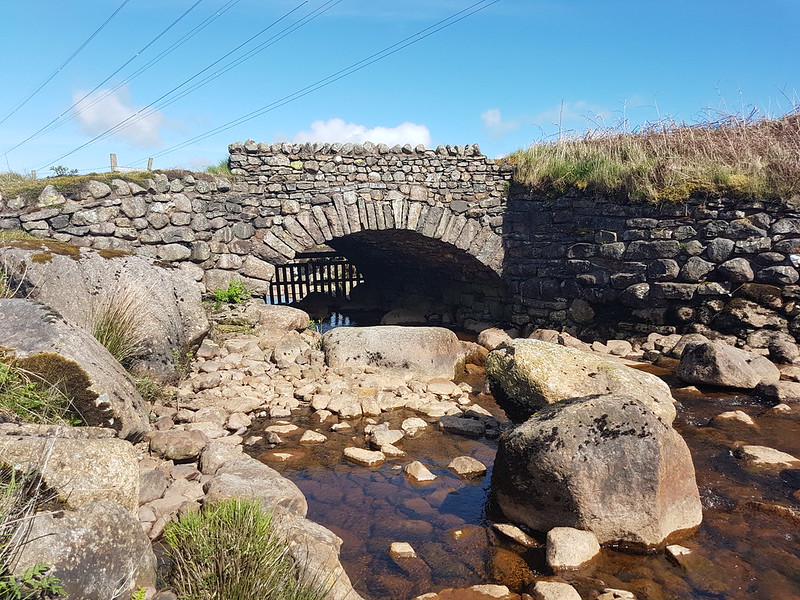
At Wasdale Old Bridge, I finally did stop for a cup of tea and watched a pair of Dippers flitting in and out from the underside of the bridge, where I assume they had a nest. I managed to scotch any possibility of another brew-stop by clumsily tipping my unused tea leaves into the stream.

The next section of the route was all on a broad gravel track. Not the most attractive path, but at least easy going. I thought Packhorse Hill looked worthy of a look at some point. Likewise the hills around the upper reaches of Wasdale and Crookdale.


Along the track, the vegetation on the left was dominated by heather, whereas to the right it was all grasses. I can only assume that the stark contrast is due to a different grazing regime.
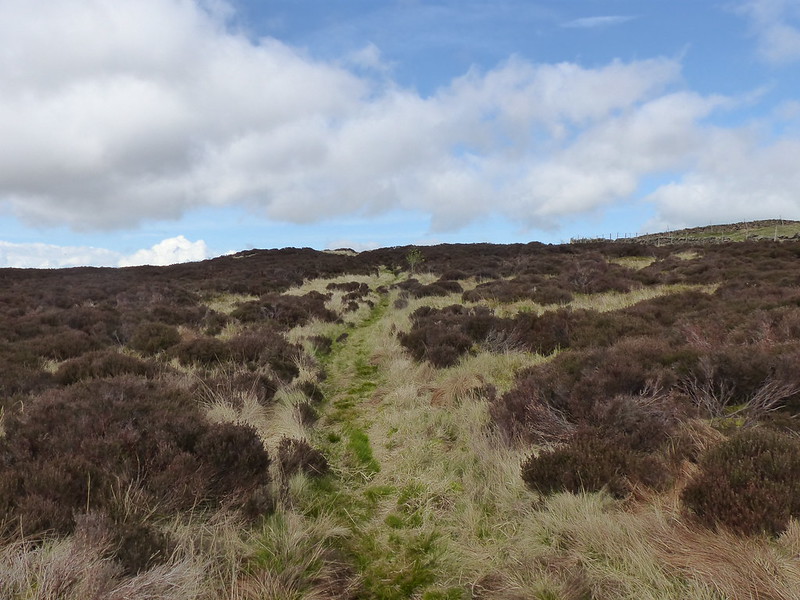
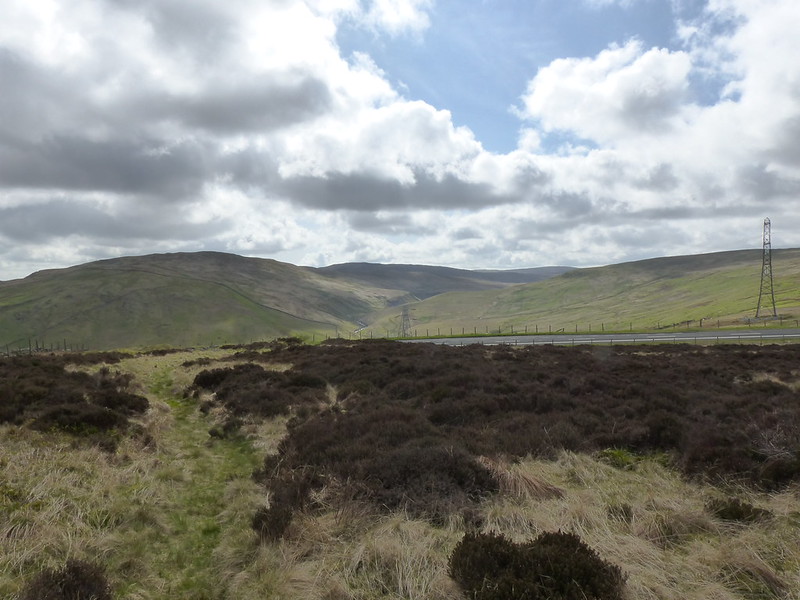
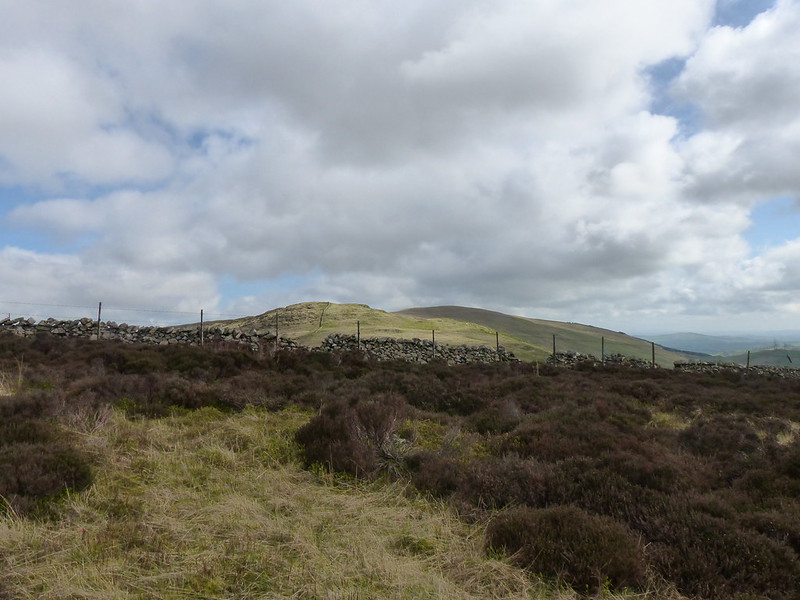


There were Stone Chats all along the wall here. Curlews were circling and calling too, but much harder to catch on camera.
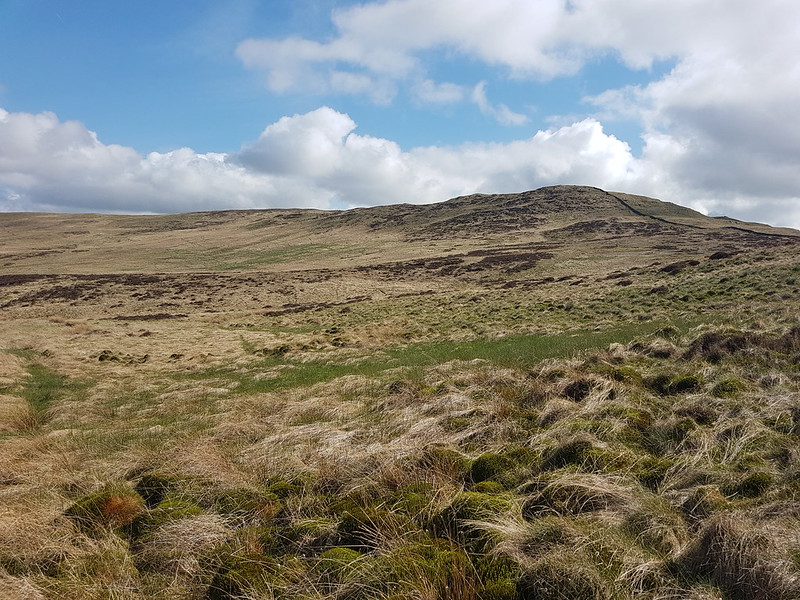
Crookdale Crag has been added to my ‘to visit’ list too. Along with the Birkbeck Fells. An ever expanding list!

The path, which had started well, seemed to peter out, or at least, I lost it for a while. It was rough and fairly boggy ground. Bizarrely, I was just thinking that it was perfect territory for Short-eared Owls – one of my few previous sightings was above nearby Wet Sleddale – when one came sweeping low down the hillside from behind me. I scrambled for my camera whilst trying to keep an eye on the owl. It hunted, nearby, apparently not much bothered by my presence. It’s behaviour reminded me of Kestrels: hovering quite low and then plunging into the grass. Not surprising I suppose since both hunt voles.
Landing some distance away it scanned the surroundings – I have photos of it looking straight at me, but also with its head turned to the extreme left and right.

Fortunately, it eventually flew back towards me to hunt again, before finally leaving. Of the many photos I was able to take, these two are by far and away the best. A beautiful bird and a magical experience.
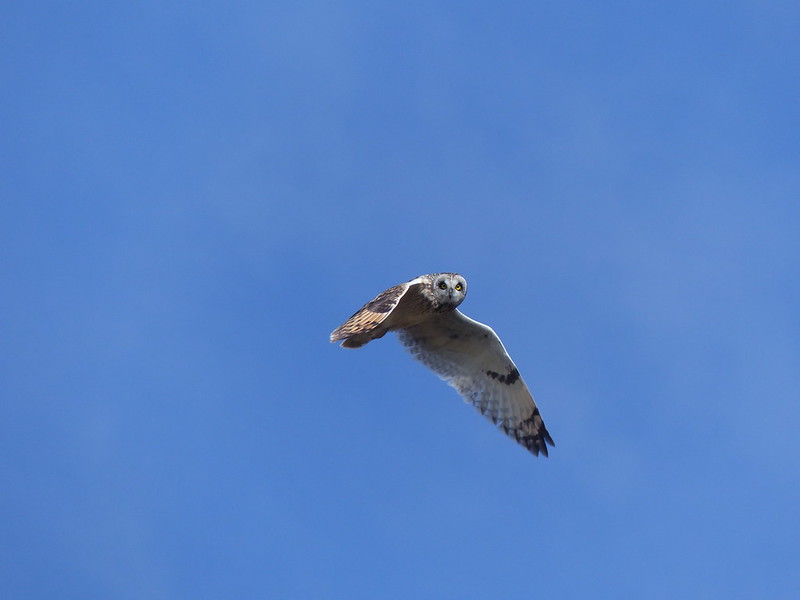
I suppose after that I was predisposed to fall in love with Bretherdale, which I duly did.
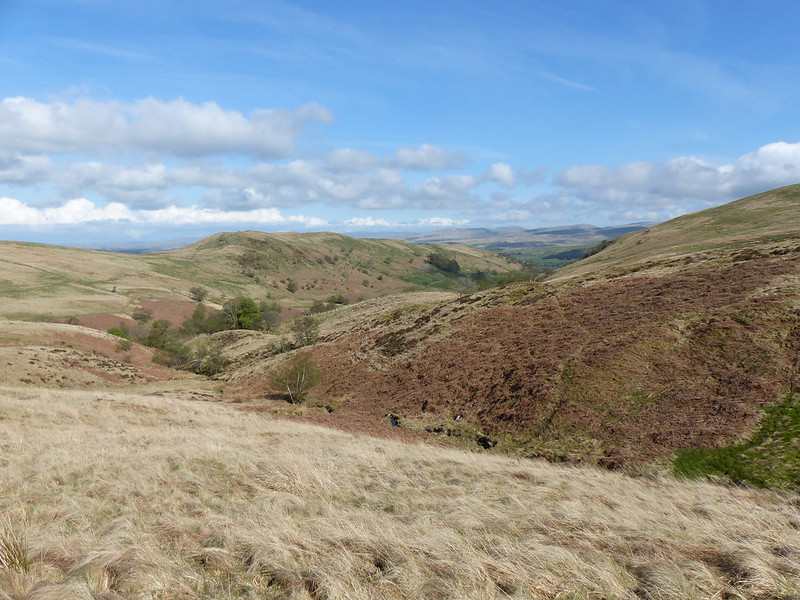
Thorny Bank is yet another hill I shall have to climb at some point.

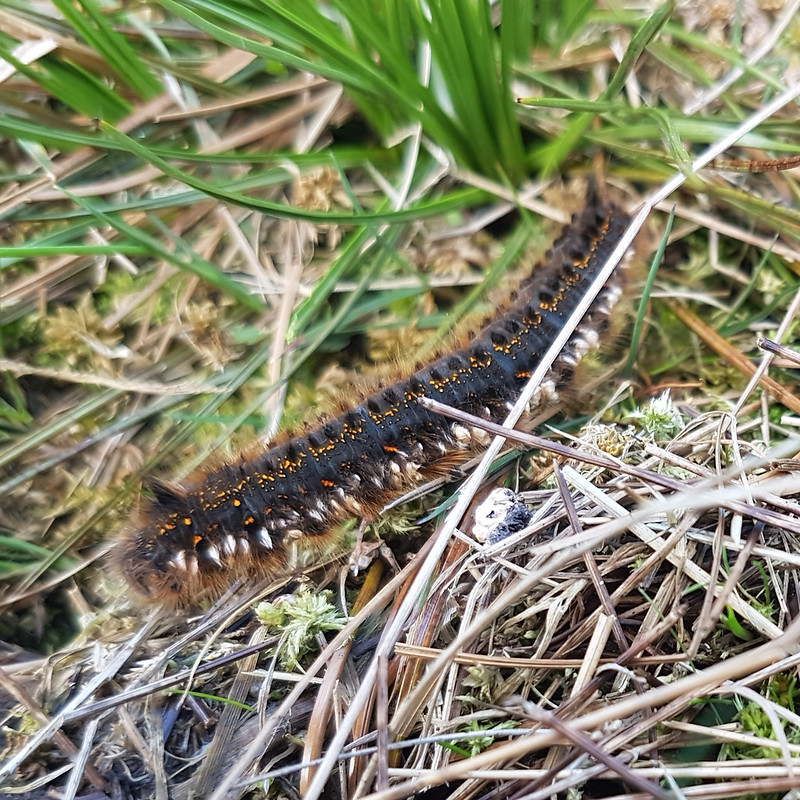
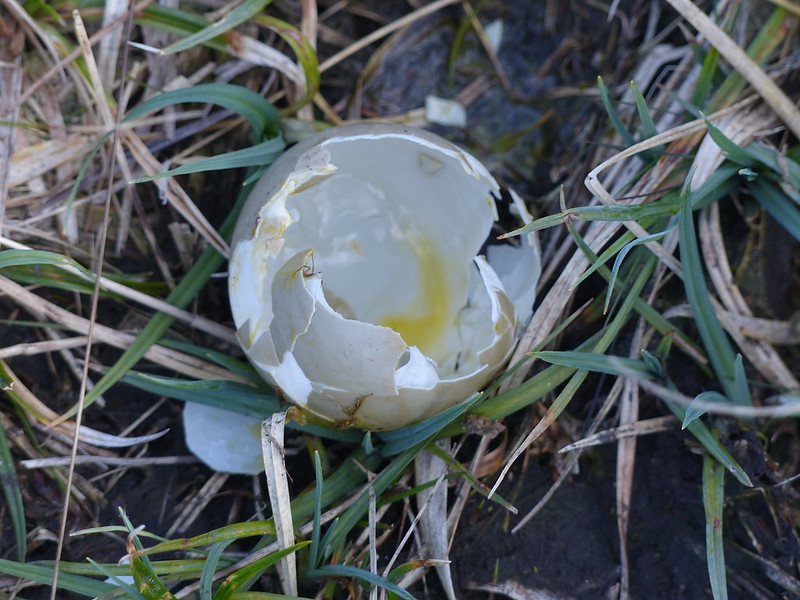
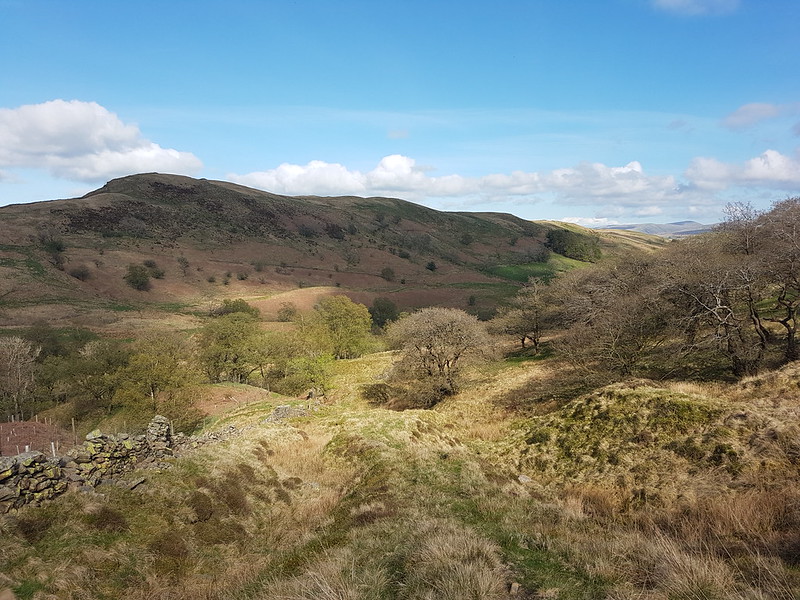

There was a sketchy path here, but it was very wet underfoot and once again I was very glad to have M’s boots.
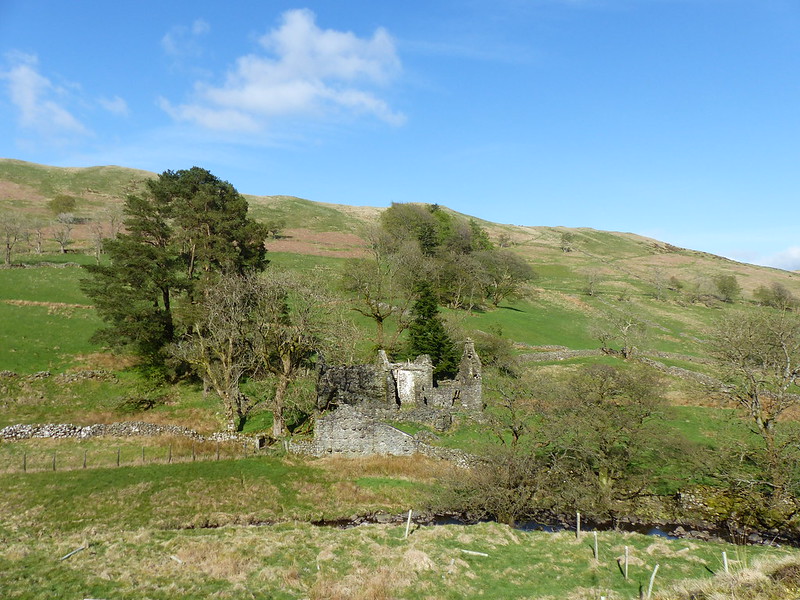
I’ve decided to buy Parrocks and do it up. When my long lost wealthy relative leaves me a surprise legacy of millions, obviously.

This latch was rusted shut and since the fence was topped with barbed-wire, there was no other option than to climb the broken gate, which felt decidedly like it might give way under the strain.
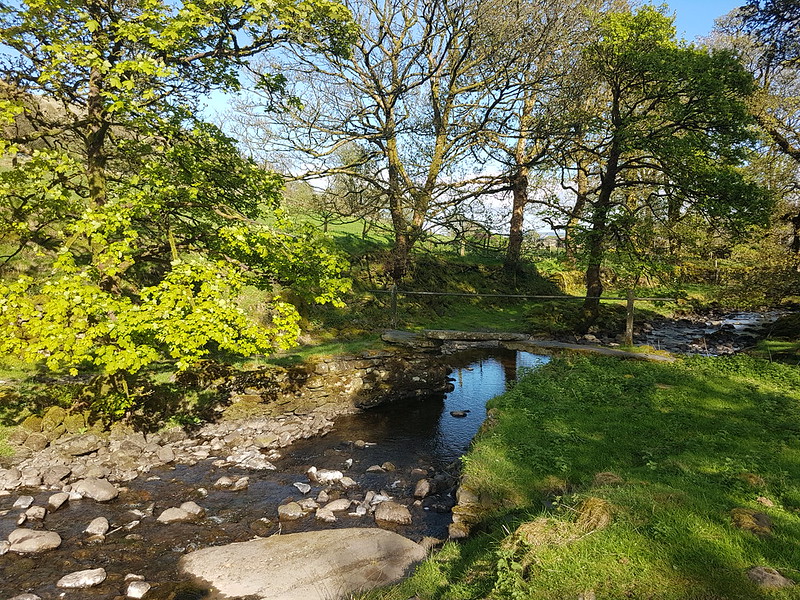
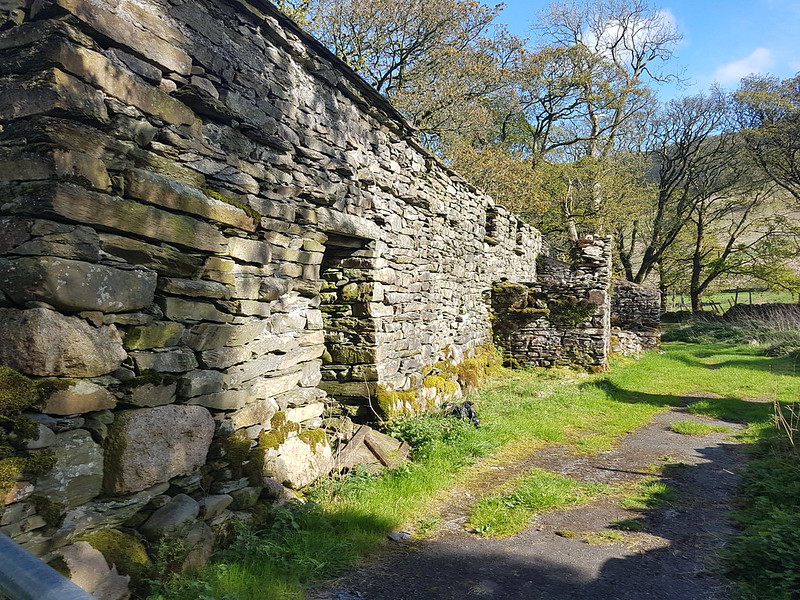

I think that there was a for-sale sign at Bretherdale Head and the gate was locked and festooned with barbed wire. I had been thinking that the land here was being managed for conservation, but now began to wonder if it had just been too uneconomic to farm and was abandoned. Later, I did see a chap on a quad bike, at Midwath Stead, who I assume was a farmer, so some of the area is being worked, but I didn’t see many sheep on the hills.

Breasthigh Beck is yet another feeder of the Lune and since Breasthigh Road follows it upstream and then over into ‘the other’ Borrowdale, this is somewhere else I shall have to come back to.



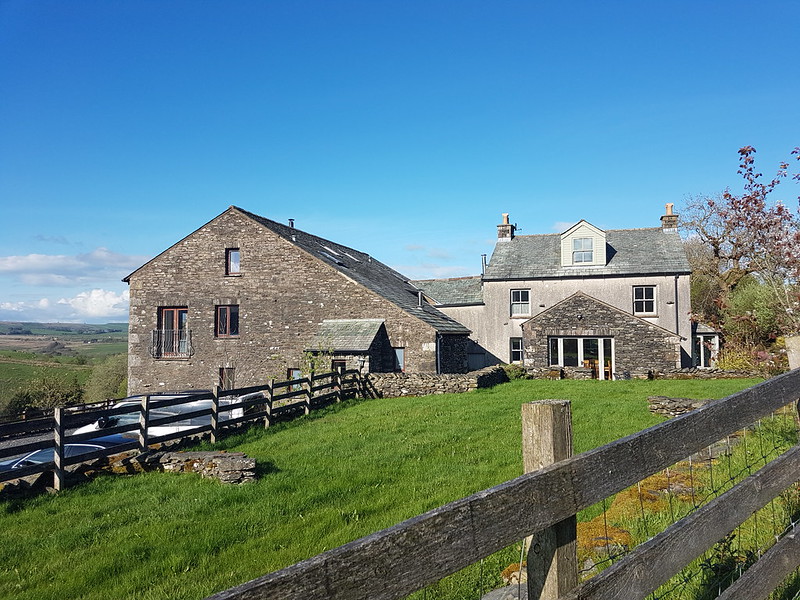

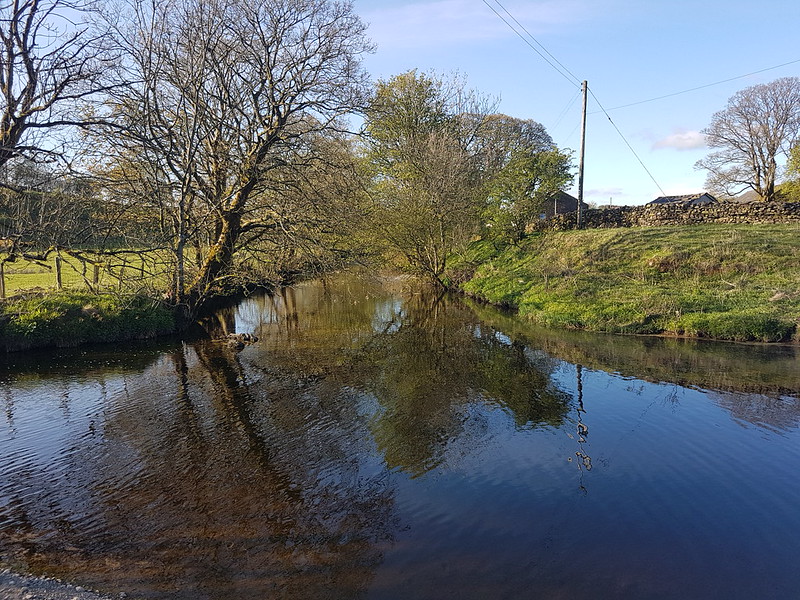
It was rather late in the day, otherwise this looked like a good spot for a dip. I shall bear it in mind!
At the end of my walk I was following Birk Beck again, but on the south bank this time. A Hare sprang up from where it had been hidden in the grass and raced away from me. Seemingly by coincidence, a Buzzard soared in from another direction, but their paths converged and for a few seconds the raptor flew just above the Hare. I couldn’t decide whether the Buzzard actually hoped to catch the Hare, but it seemed like an uneven contest – the Hare was so fast and soon away and safe.
Shortly afterwards, I stopped to check my position on the OS app, put my phone back in my pocket and then realised that there was another Hare right by my foot. It seemed to be trying to press itself down into the sward and with its eyes, either side of its head, was able to look straight up at me without lifting it’s head at all. We stared at each other briefly, then I reached for my phone again, the spell was apparently broken and the Hare, well….hared off at great speed, much too quick for me to get even a rubbish photo.
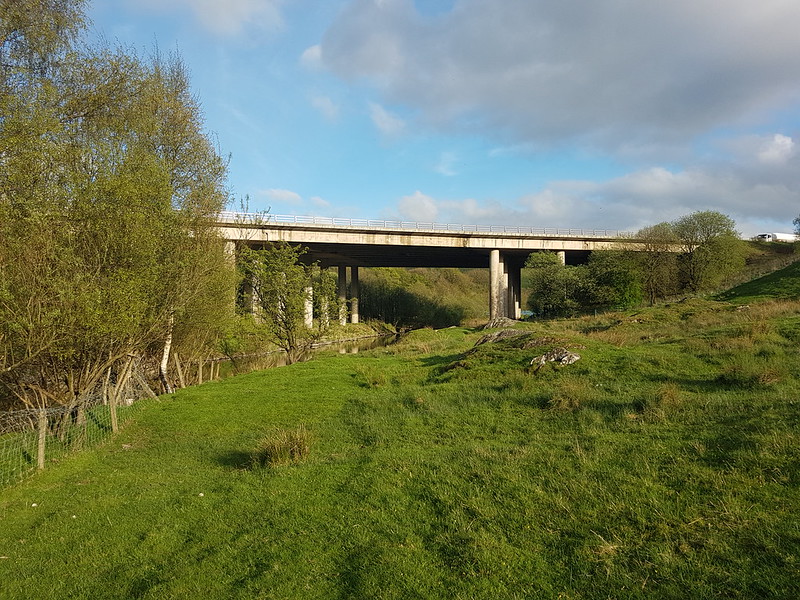
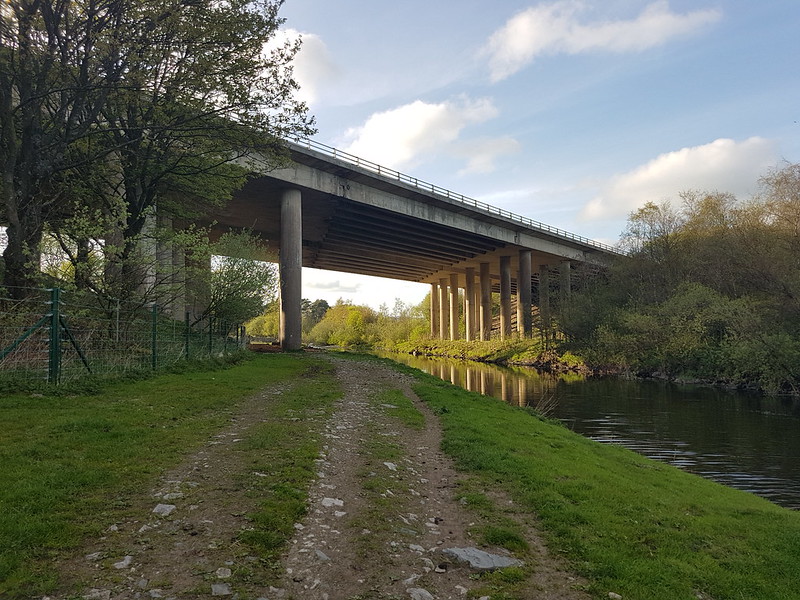
Although the OS map shows the footbridge, it also says ‘Ford’ by the path, so I was very pleased to discover that the bridge was for public use and I wouldn’t have to finish my walk by immersing myself in the Lune.
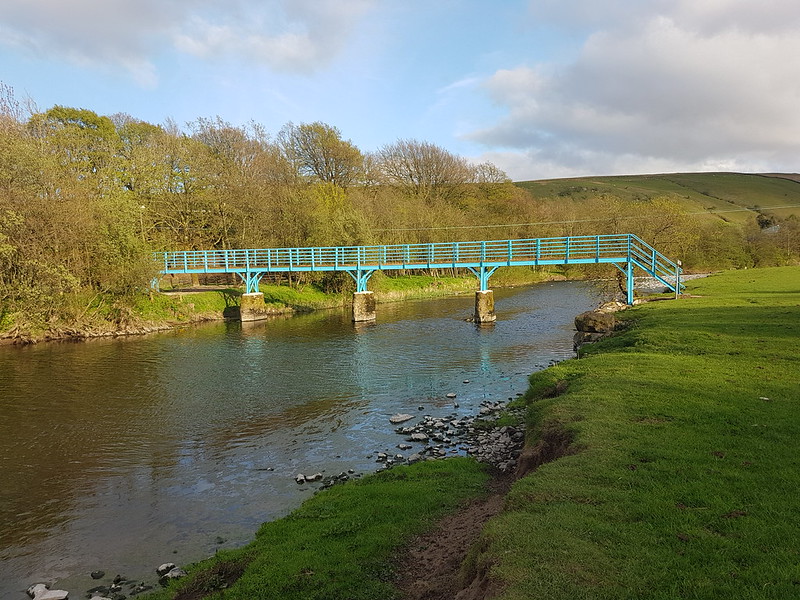
MapMyWalk gives 16 miles and 400m of ascent. A very full day in many ways.

I have several more Lune Catchment posts to come and can’t pass up this opportunity to share again the marvellous online book ‘Lands of The Lune‘ by John Self, which if you have interest in the area is a must read.

The route – should you wish to trace it on the map and/or on the ground: park at Old Tebay, follow the Lune north-east, cross the Lune, through Bybeck, under the motorway, left on the track to Birk Beck, follow Birk Beck to Bridge End, right on the lane, path off to the left, cross Birk Beck and take the minor lane to Scout Green, paths by Birk Beck to Shap Wells Hotel, path up Wasdale and keep that direction to cross the A6, turn left to recross the A6 over Bretherdale Bank and down Bretherdale, minor road to Bretherdale Hall, turn left and cross the beck, turn right at the meeting of paths, then along Birk Beck and the Lune to Tebay.

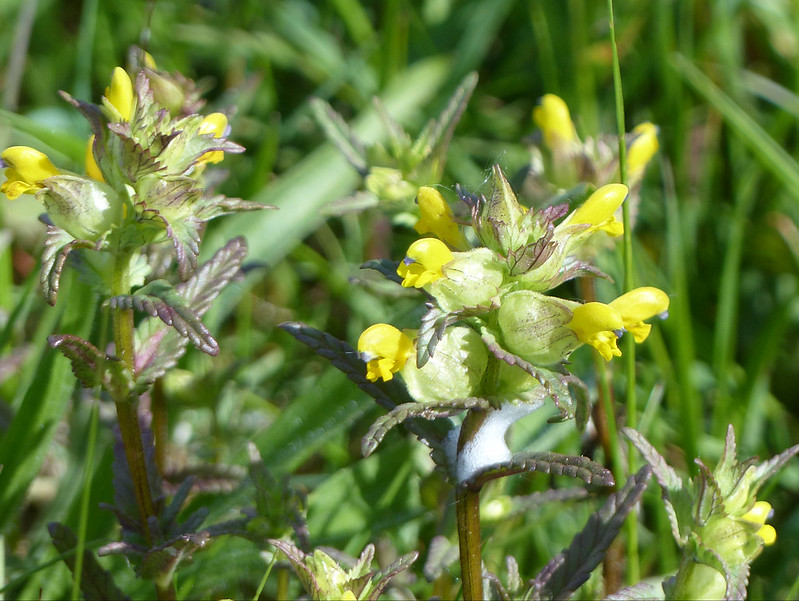

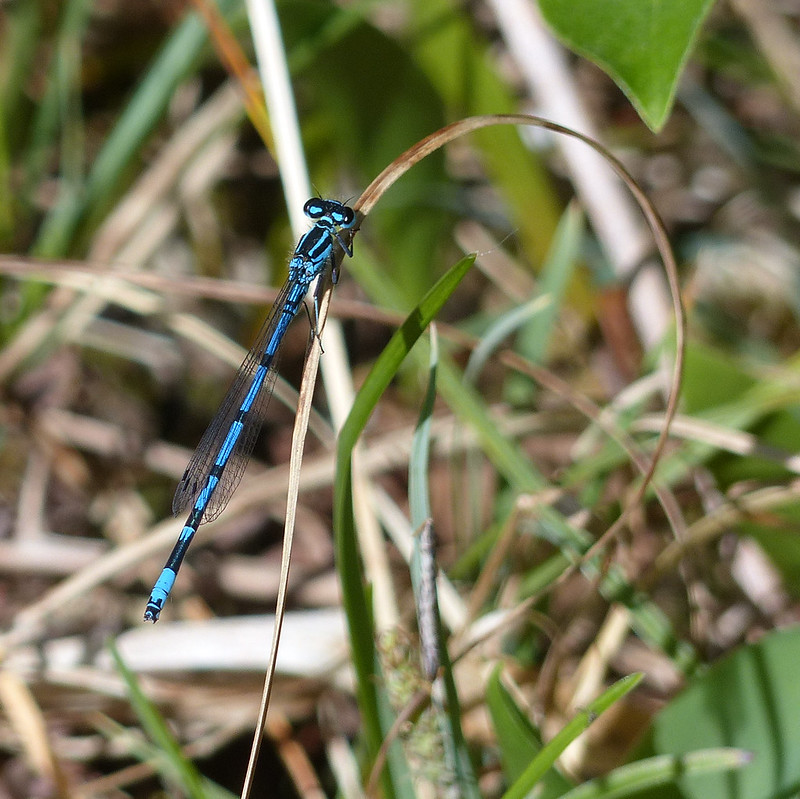
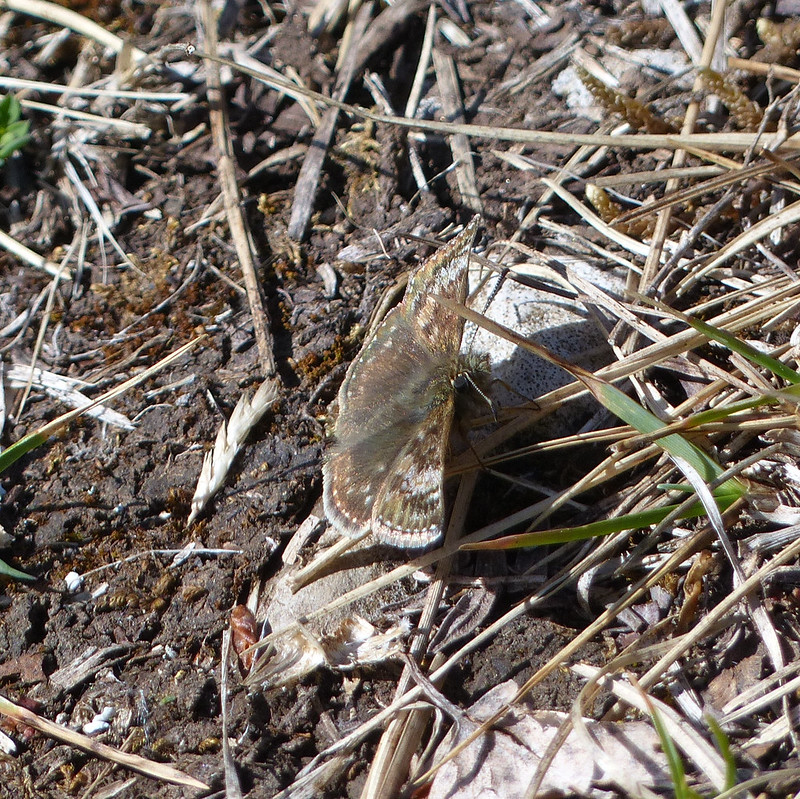

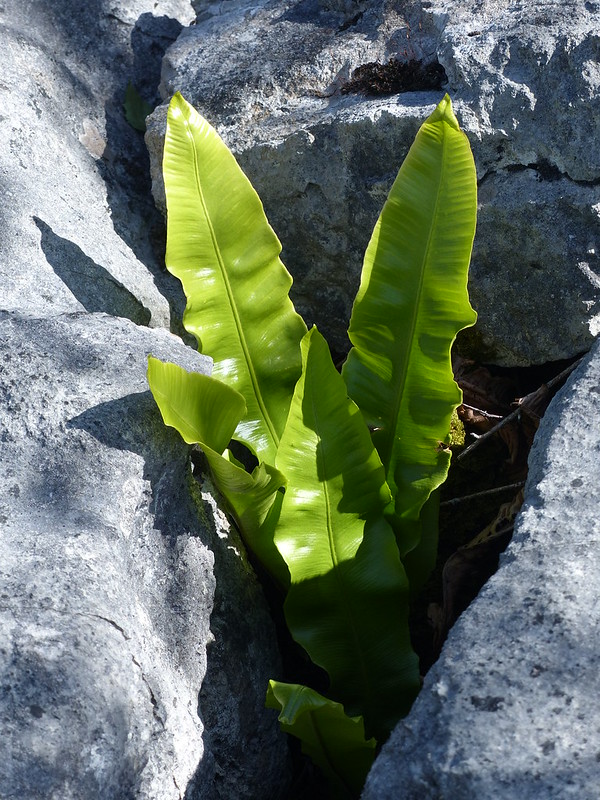
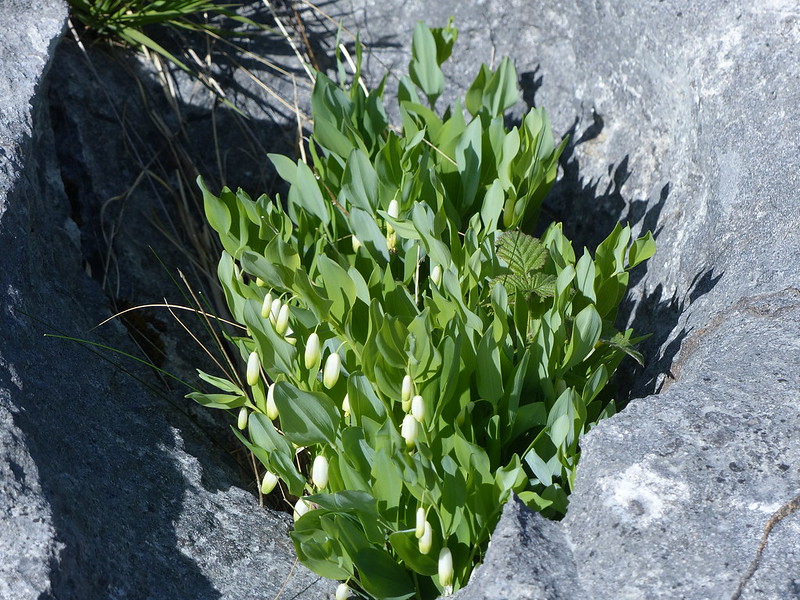
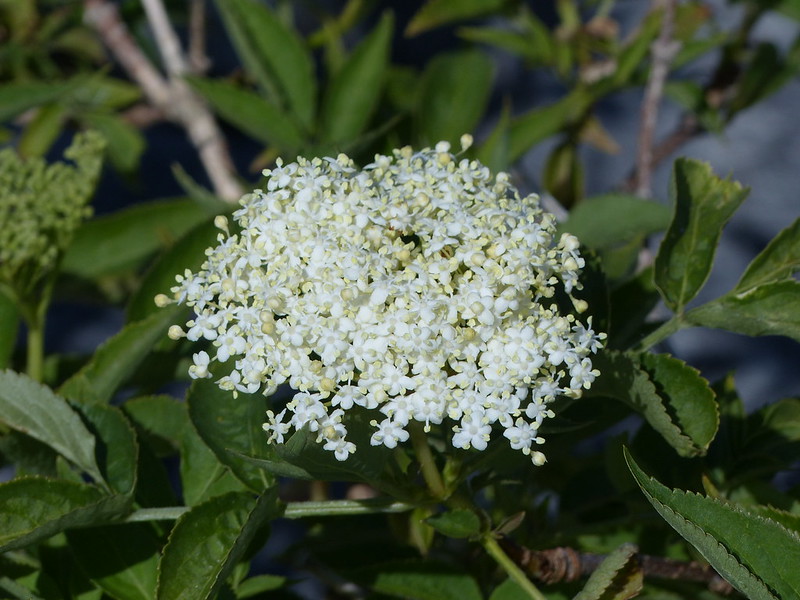
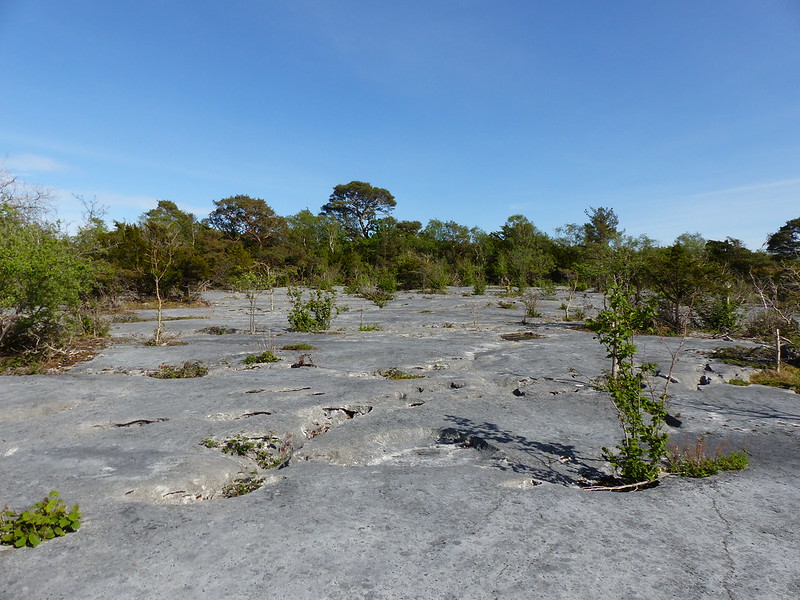





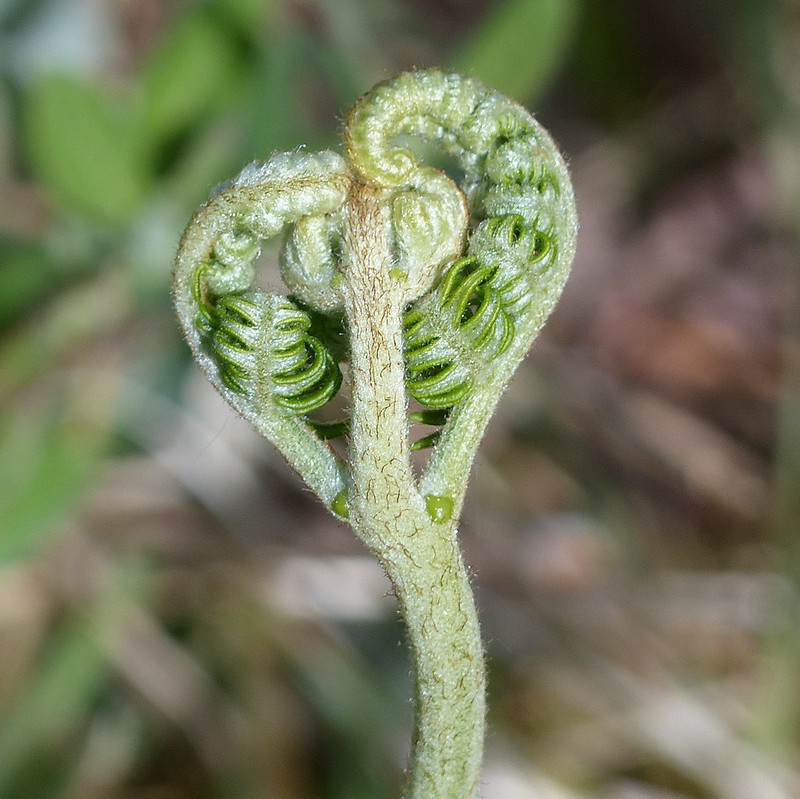
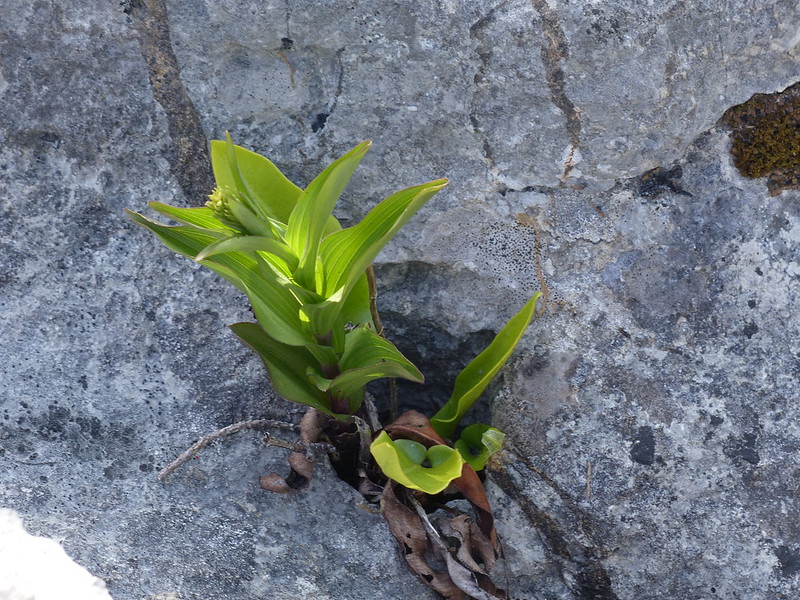
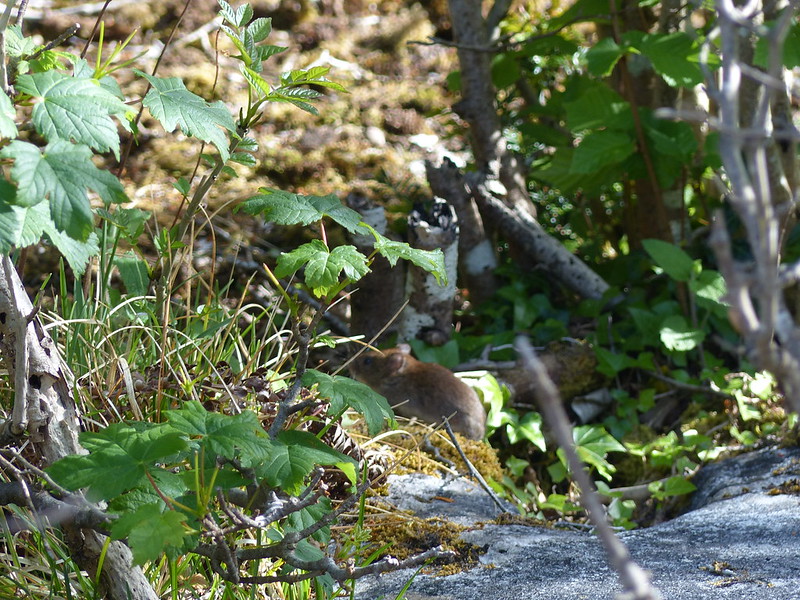

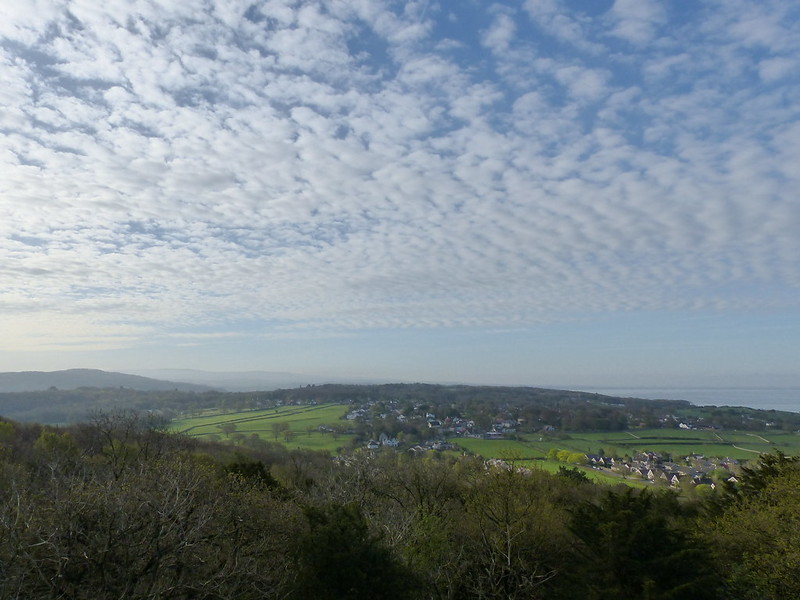
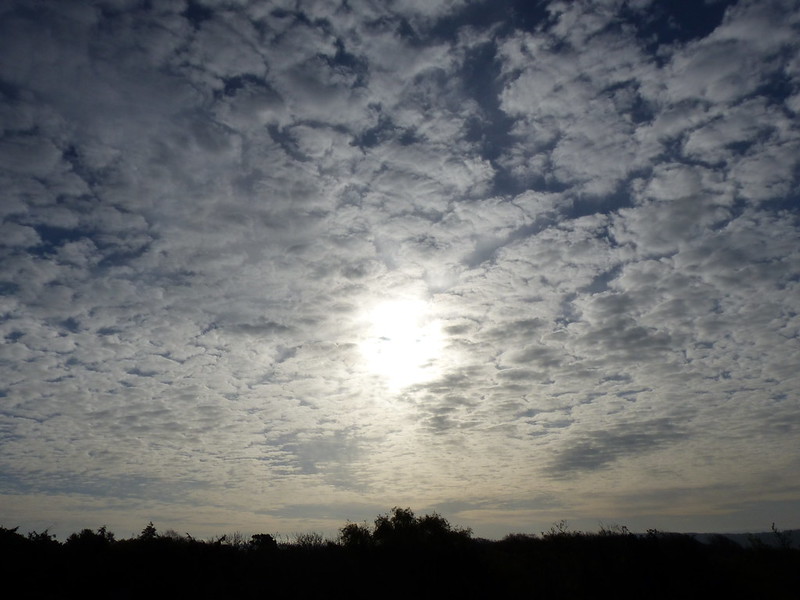

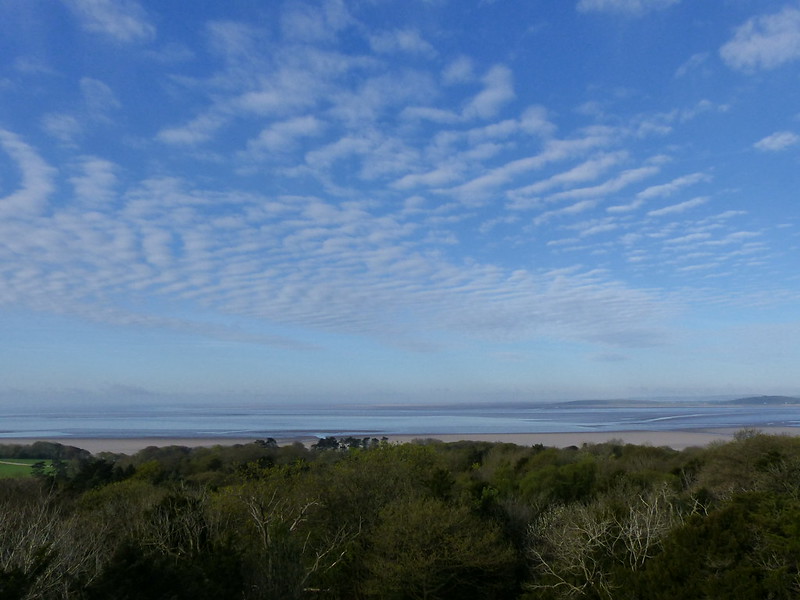




 The walk had been accompanied predominantly by the sound of blackbirds, and not for the most part their wonderful singing but more often the aggressive pip-pip-pip noise which they make. On the clifftop path a softer pip-pip-pip had me searching in the trees above me. A woodpecker. Even though my camera was already turned on, all I managed to photograph was the branch where the woodpecker had just been. A little further along the path another soft sound, softer still in fact, had me scanning the treetops again. There are many dead trees in this small patch of woods and many of them are full of holes drilled by woodpeckers. In addition, many of the living trees have small neat round holes in them – it’s just near here that I saw the
The walk had been accompanied predominantly by the sound of blackbirds, and not for the most part their wonderful singing but more often the aggressive pip-pip-pip noise which they make. On the clifftop path a softer pip-pip-pip had me searching in the trees above me. A woodpecker. Even though my camera was already turned on, all I managed to photograph was the branch where the woodpecker had just been. A little further along the path another soft sound, softer still in fact, had me scanning the treetops again. There are many dead trees in this small patch of woods and many of them are full of holes drilled by woodpeckers. In addition, many of the living trees have small neat round holes in them – it’s just near here that I saw the 



